Understanding how redfish react to these "bad conditions" will place your boat where it needs to be to put limits in the box.
More...
Some inshore anglers hate cold and low water, but I love it!
I love it because it's easier to find redfish.
They literally have less water to swim in, making locating them very simple.
So where do I find them when the water gets low? How do I know where to start?
Targeting Redfish after a Cold Front
To target redfish during cold, crappy weather we have to understand a couple things:
- redfish feeding behavior
- water depth is not uniform
- effects of a strong cold front
Feeding Behavior
Redfish are a patrol-heavy species.
They are less likely to stage at one spot, like speckled trout, and have bait come to them.
Instead, they will move through an area, usually near a shoreline or aquatic grass, like what you see in this video.
They typically put their sides against the shoreline or grass mat, staying near as they patrol for forage.
They do this in ponds inside the marsh, and these ponds are relatively "shallow" at 1-4ft deep
They look like this one here, which is about a half mile across.
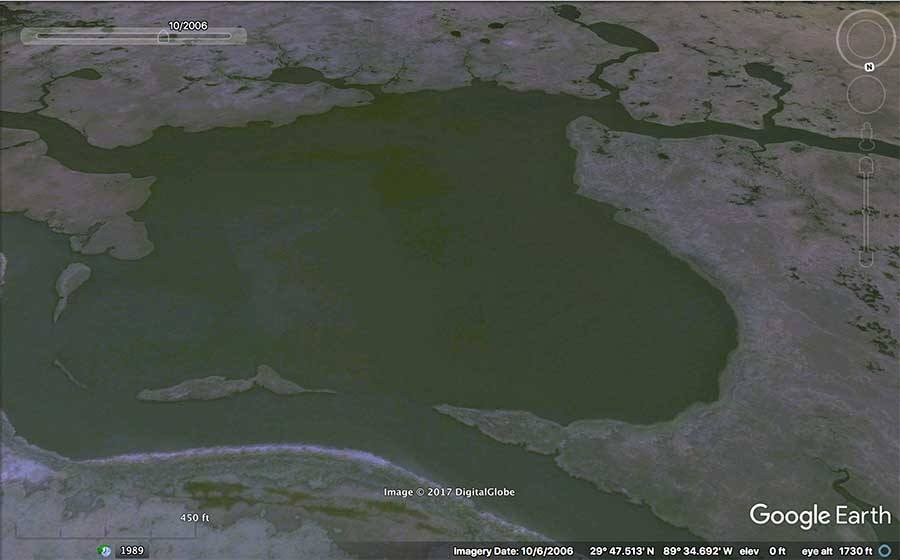
So where do they go in this pond when the water gets cold and low?
Let's explore that answer by first understanding the nature of water depth in the marsh.
Understanding the "Stairs" Concept
If you know what's inside Inshore Fishing 101, then you already know where the shallow and deep water is in this pond.
You also know to view the marsh as being a set of stairs that fish go up and down on with the water level.
There are different parts of the stairs, with the highest level being shallow water, or "top" of the stairs.
The lowest level is the deepest water, or "bottom" of the stairs.
For those of you who haven't, let me illustrate it anyway:
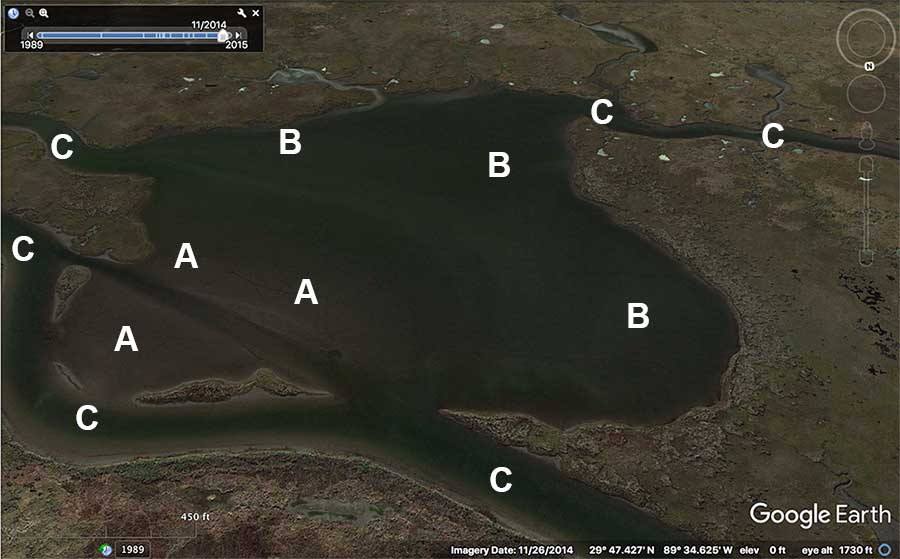
Water Level "A"
The highest level or "top" of the stairs.
This is the water that will turn to land after a strong cold front rolls through the marsh (i.e. one blowing 25-30+ knots out of the west or northwest).
Water Level "B"
Where some water remains after a cold front, just enough to get your boat into, usually three feet or less. Basically the "middle" of the stairs.
Water Level "C"
The deepest water, usually 6ft+, but could be 3-5ft deep, depending on the relative depth in the surrounding area.
This is the lowest water level, or the "bottom" of the stairs.
What worked before, doesn't now.
Sometimes you hear anglers complaining that water is too low and they can't fish their usual spots, all because of the cold, crappy weather.
They are correct in one way: If their spot was at the "top" of the stairs, it'd be devoid of water after a strong cold front.
But their assessment that it makes for bad fishing is completely wrong.
The fishing is good, they're just failing to adapt to the conditions.
Remember fish are lazy, and they're not going to do any more work than what they need.
This means they won't be far away when the water drains out.
The solution is simple.
With normal water levels, redfish can be on any level of the "stairs".
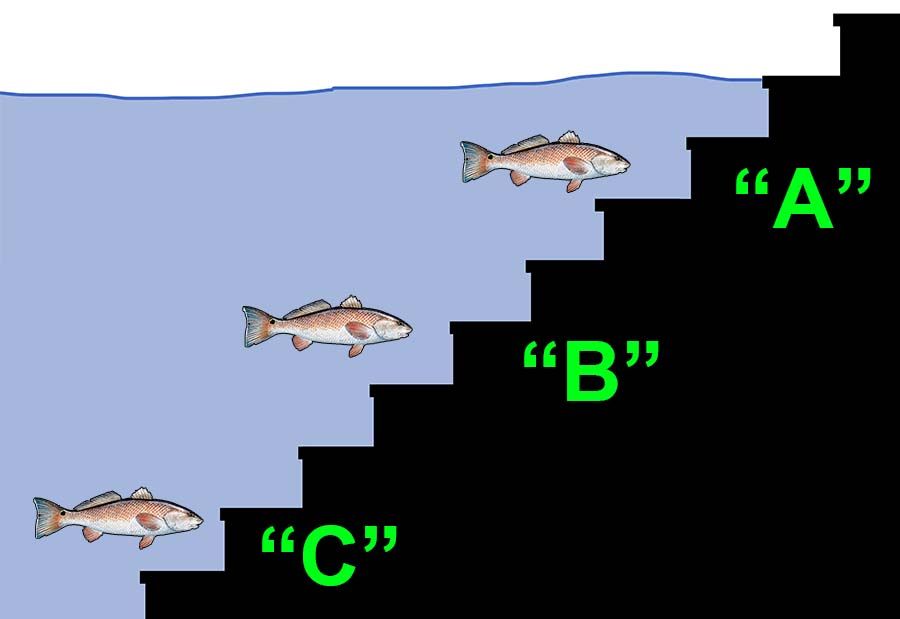
When A drains out, redfish are forced to go to B and C.
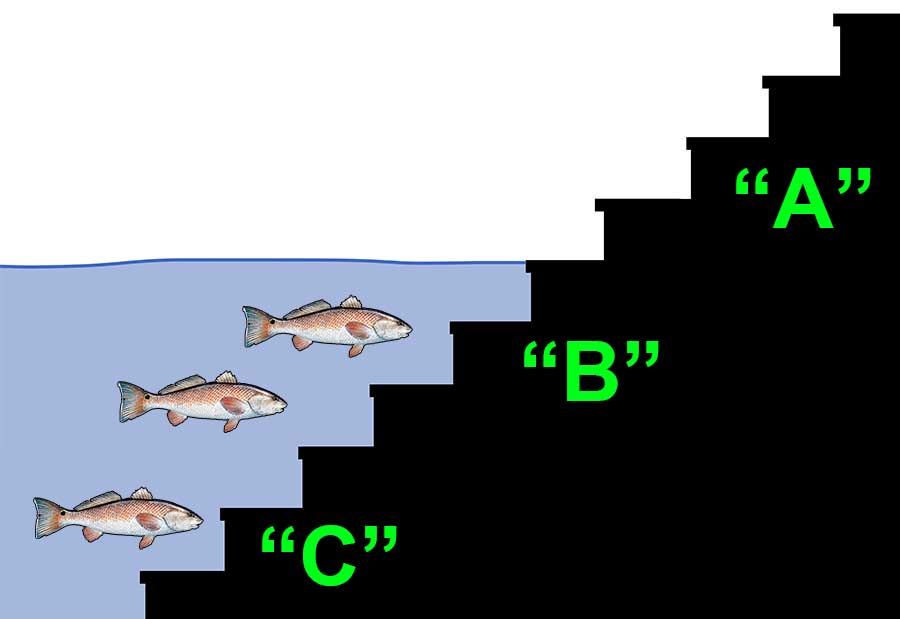
When B drains out, redfish will become thick as thieves at C.
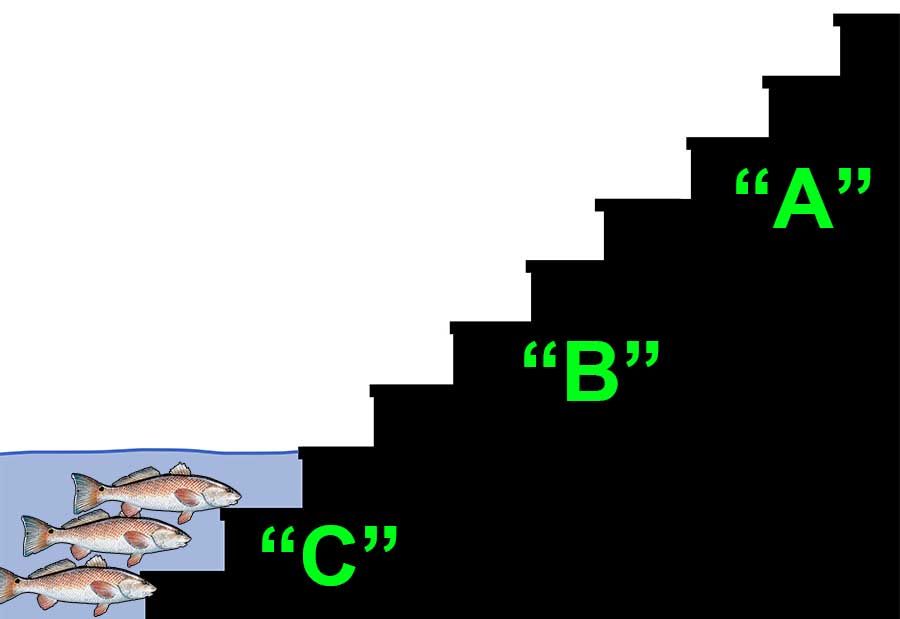
And this is what the "stairs" concept looks like on a map during normal water levels.
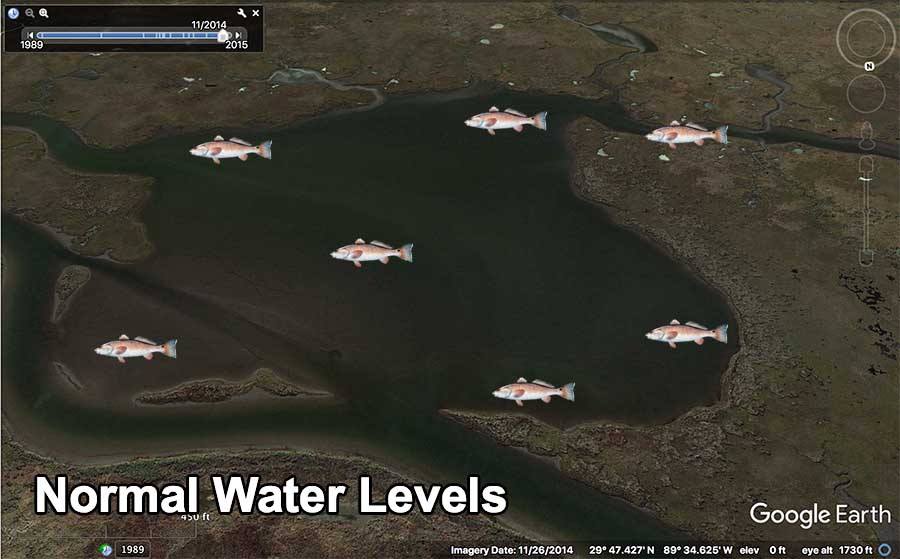
Then what it looks like once water levels drop:
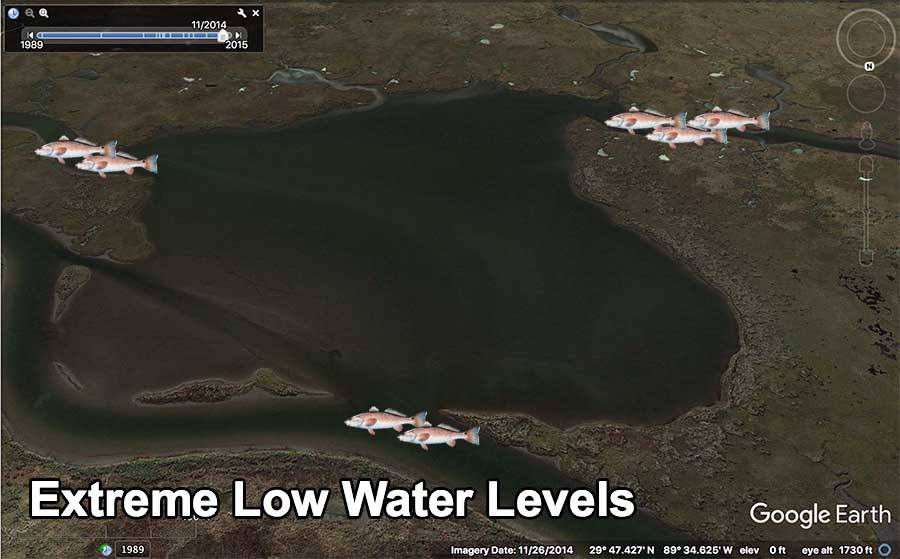
Now you understand why I like lower water levels!
You can see how fish are literally stacked on top of each other because they simply cannot go anywhere else.
It's easy to eliminate bodies of water that aren't productive because there is no water for fish to swim in.
This is one reason why the Redfish Jubilee happens after a strong cold front: the bayou in Yscloskey is the only place they can go.
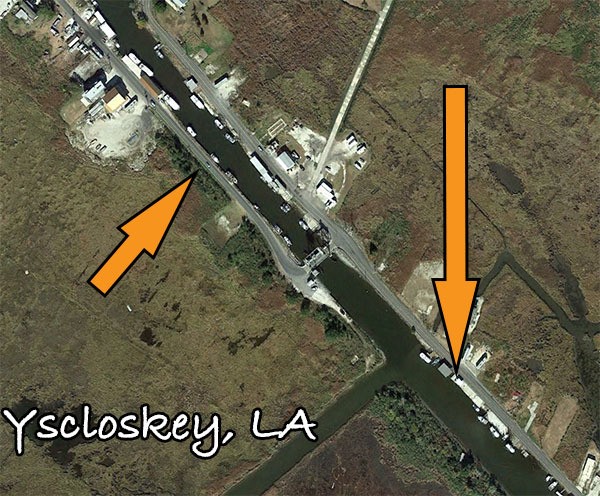
But there is another reason why!
Stable Water Temperature
Trends in water temp influence fish more than specific degrees of temperature.
Redfish do fine in 44 degrees and we easily catch limits in that temperature.
However, they will get lockjaw as their bodies take time out to adjust after a rapid temperature change.
Stable water temp is important to fish, and the sole reason they seek shelter in deep water: it's less affected by bad weather.
Conclusion
Smart anglers fish the conditions, not spots.
If you're fishing a spot just because you did great there, it's a matter of time before fish leave and you'll be left wondering why.
They could leave for a lot of reasons, and cold & crappy weather could be one of them.
But now you've consumed this knowledge and will know what to do when the water level drops.
Questions? Comments? Chime in below!

They’d go to deeper water, especially that which is protected from the wind. Why not try fishing both locations to see for yourself?
I fish Lake Decade. There are some ditches in the lake with 10 to 11 feet of water. Will those fish hunker down in the lake itself or migrate to surrounding canals close by?
Thanks, Roy!
As always you hit it on the head. Our grandfathers (those who knew) would teach us, younger anglers, the same as you described. However, those that didn’t have the teaching either by older fisher, or by you, don’t have a clue. They wait to May, “when they feel/know? the fish start biting”. Much different than winter fishing as you just explained. Very good job, everyone can learn from you.
Thanks, BigG!
Thanks.
You are a great guy to watch and read. Keep up the good work.
All excellent points.
Also, the protected “shoreline” of the bayou will help keep the water warmer. Then, fish structure, structure, structure. That is, docks, rocks, mangroves or other trees hanging over the water, changes in water depths (drop-offs), oyster beds, etc. This can be a great time to fish docks. A slower retrieve may very well be in order, as they will be a little sluggish and a little smaller lure should be better than a larger one. Other shadows may be good also. This can be provided by trees hanging over the water, etc.
Only when the weather starts to heat up, will they be in deep water in the morning and the shallows in the heat of the day. Look for dark, muddy bottoms that will hold the heat better than sandy bottoms or rocks.
Knowing this type of information can keep you in the fish no matter the weather. As conditions change, your tactics and “spots” will need to change, as well. Focus on types of spots more than on spots. What worked in different weather probably won’t work when the weather changes.